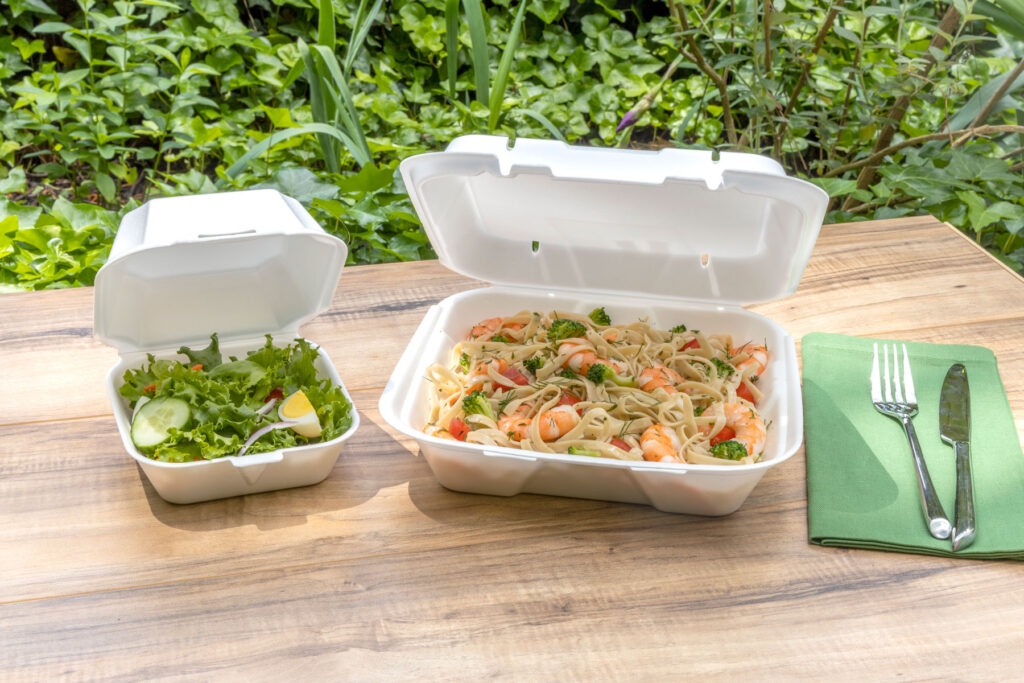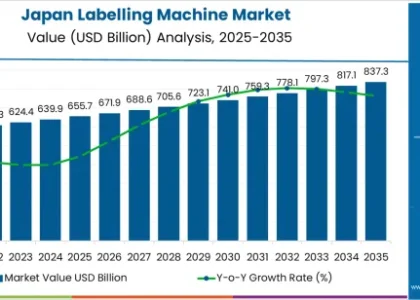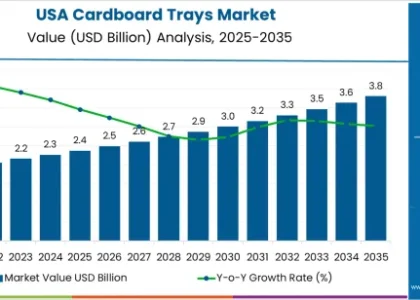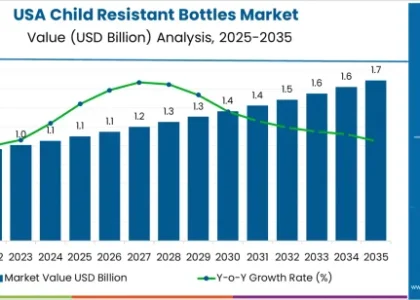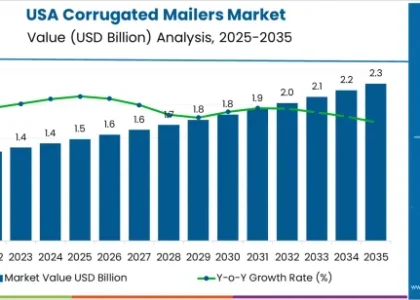Foam food containers are highly regarded for their superior thermal insulation properties, effectively keeping food hot or cold for extended durations. Additionally, these containers prevent condensation, aiding in preserving the freshness of food items. Their exceptional insulation makes them ideal for storing and transporting a variety of foods, showcasing their practicality and adaptability to meet both consumer and industry needs.
The Asia Pacific region stands as the largest consumer, representing approximately 48% of the global market for foam containers. Following closely, Europe takes the position of the second-largest consumer of foam food containers, surpassing North America in its usage.
Notably, emerging economic powerhouses like India and China are exhibiting a growing demand for foam food containers, driven by increasing consumption and the expanding food service sector. In addition, regions like Latin America and Africa have also adopted foam food containers as a popular choice for food packaging, with the demand continuing to rise year after year.
One noteworthy trend contributing to the growth of the foam food containers market is the seafood industry. Nations involved in seafood processing, particularly those reliant on seafood exports and the need to maintain freshness, are increasingly turning to foam food containers for their packaging requirements. Japan, a prominent seafood processing nation, is expected to witness the expansion of its foam food containers market, with the flourishing seafood sector playing a pivotal role in this growth trajectory.
Request Sample: https://www.futuremarketinsights.com/reports/sample/rep-gb-6665
Business Growth Drivers:
- Cost-effectiveness: Foam food containers are often more affordable compared to alternatives like paper or biodegradable options. This makes them attractive for businesses seeking cost-effective packaging solutions.
- Insulation Properties: Foam containers provide excellent insulation, keeping food hot or cold for longer periods. This feature is particularly valued in the food industry, especially for delivery and takeout services.
- Lightweight and Durable: Foam containers are lightweight yet sturdy, making them easy to handle and transport. This durability ensures that food remains intact during transportation and storage.
- Versatility: Foam containers come in various shapes and sizes, catering to different types of food items. This versatility appeals to businesses looking for packaging solutions that can accommodate diverse menu offerings.
- Convenience and Convenience Stores: Foam containers are commonly used in fast-food chains, convenience stores, and food trucks due to their convenience. They are easy to stack, store, and dispose of, making them popular choices for businesses with high-volume sales.
- Consumer Demand: Despite growing concerns about environmental impact, consumer demand for convenience and practicality sometimes outweighs sustainability considerations. This demand continues to drive the use of foam food containers in the market.
Industry Restraints:
- Environmental Concerns: Foam containers are notorious for their environmental impact. They are not easily biodegradable and can persist in landfills for hundreds of years, contributing to pollution and environmental degradation. Increasing awareness and regulations aimed at reducing single-use plastics have put pressure on the foam food container market.
- Regulatory Restrictions: Many regions have implemented bans or restrictions on foam food containers due to environmental concerns. These regulations can limit the market’s growth by reducing the use of foam packaging in various industries.
- Shift Towards Sustainable Alternatives: Businesses and consumers are increasingly opting for eco-friendly packaging options, such as paper-based or biodegradable containers, in response to environmental awareness campaigns and regulations. This shift away from foam containers poses a significant challenge to the market’s growth.
- Negative Public Perception: Foam containers have garnered negative publicity due to their environmental impact. Public awareness campaigns highlighting the hazards of single-use plastics have contributed to a decline in consumer acceptance of foam packaging.
- Market Competition: The foam food container market faces competition from alternative packaging solutions that offer eco-friendly alternatives. Companies offering sustainable packaging options are gaining traction in the market, posing a challenge to foam container manufacturers.
Key players
Key players for foam food container market can be segmented based on Tier 1, Tier2 and Tier 3 based categories.
Tier 1 players: Genpak, LLC, Dart Container Corporation, Biopac India Corporation Ltd., Landaal Packaging Systems, Inc., Harwal Group of Companies, etc.
- Landaal Packaging Systems, Inc manufactures foam food containers which are mainly manufactured from biodegradable and compostable foam. Genpak LLC and Dart Container Corporation are few of the leading manufacturers of foam food containers market by revenue.
- Genpak LLC manufactures 16 types of foam food containers based on shape and size of the container for several food applications.
- Dart Container Corporation mostly manufactures foam food containers made from Expanded Polystyrene (EPS). Dart Container Corporation also provides printing capability for its 14 foam food containers products which it manufactures.
Tier 2 players: Great Northern Corporation, Megafoam Containers Enterprise Sdn Bhd, Republic Plastics, Ltd., Styrotech Corporation, Packaging Resources Inc., Beltec Sdn bhd, Citi Pak LLC, etc.
Tier 3 players: Reach Plastic Industrial Co., Ltd., Di Xiang Trading Co., Ltd., Bestern Industry And Trade Co., Ltd., Luheng Papers Company Ltd., Jeafer Foodservice Solutions Ltd., Industrial (Shenzhen) Co., Ltd., ZBR Packaging Materials Co., Ltd., etc.
Request Report Methodology: https://www.futuremarketinsights.com/request-report-methodology/rep-gb-6665
Market Segmentations:
The global foam food container market can be segmented by material type, product type, distribution channel, and by application. Pricing has been done based on material type segment in US$ million and the volume is considered in tonnes.
On the basis of material type
- Expanded Polystyrene (EPS) foam food container
- Polyurethane (PU) foam food container
- Biodegradable foam food container
On the basis of product type
- Hinges food foam container
- Un – hinged food foam container
On the basis of distribution channel
- B2B
- Food Outlets
- Educational institutions
- Corporate offices
- Healthcare
- B2C
- Online retail / Ecommerce
- Supermarket / Hypermarket
- Convenience stores
- Mom and Pop stores
On the basis of application
- Ready to eat food
- Frozen food
- Ice cream & dairy products
- Bakery & confectionery food items
- Meat, seafood & poultry items
About Future Market Insights (FMI)
Future Market Insights, Inc. (ESOMAR certified, recipient of the Stevie Award, and a member of the Greater New York Chamber of Commerce) offers profound insights into the driving factors that are boosting demand in the market. FMI stands as the leading global provider of market intelligence, advisory services, consulting, and events for the Packaging, Food and Beverage, Consumer, Technology, Healthcare, Industrial, and Chemicals markets. With a vast team of over 5000 analysts worldwide, FMI provides global, regional, and local expertise on diverse domains and industry trends across more than 110 countries.
Contact Us:
Future Market Insights Inc.
Christiana Corporate, 200 Continental Drive,
Suite 401, Newark, Delaware – 19713, USA
T: +1-845-579-5705
For Sales Enquiries: sales@futuremarketinsights.com
Website: https://www.futuremarketinsights.com
LinkedIn| Twitter| Blogs | YouTube


